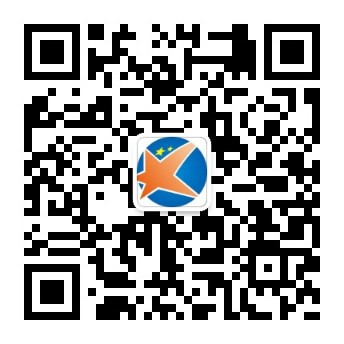初中名师视频课程免费试听1200分钟 |
||||
| 初一全科强化班辅导课程 免费听课 | 初二强化班辅导课程 免费听课 | 初三强化班辅导课程 免费听课 | ||
中考英语必考词汇精讲为你全方位解说词汇,在词汇记忆的同时渗透了词语的常用搭配和精确到位的用法精讲,做到学以致用; "拓展"为零散的单词"搭桥",从而成倍地扩大词汇量;另外通过"因字而生句,积句而成篇"的方式为英语写作打下坚实的基础; "辨析"将易混词、词组进行横向比较,使词汇理解更加清晰。词汇精讲每周两期,敬请关注~
中考词汇精讲
- color
color是名词,意为“颜色”。
例如:What color is your skirt? 你的裙子是什么颜色?
color还可以作动词,它的意思是“给某物上色、着色”。
例如:Please color your picture. 请把你的画着色。
- and&or
and 和 or都是连词,可以表示“和”的意思;都可以用来连接并列的语法作用相同的成分。但是and经常用在肯定句中,or常用于否定句或疑问句中。
例如:My mother and my father are both teachers. 我的爸爸和妈妈都是老师。
I don’t like pears or oranges. 我不喜欢梨和橘子。
拓展:or还有“否则”的意思。
例如: Hurry up, or you’ll be late for school .
快点,否则你要迟到了。
- sale
sale是名词,它的意思是“出售、廉价出售”,与介词on或者for搭配。
on sale表示“出售/(特价)销售”。
例如:There are some books on sale in this book shop. 这个书店正在促销一些书。
for sale表示“待售”。
例如:The house is for sale. 这个房子待售。
sale的动词形式是sell。
例如:We sell all our clothes at a very good price.
我们所有的衣服都以非常好的价格出售。
- price
price 是名词,意为“价格,价钱”。词组“at a … price” 意为“以……的价格”。价格price只有高(high)和低(low)之分;如果表示贵或者便宜时,常用expensive 和 cheap。
例如:She bought the house at a high price. 她以高价买了那个房子。
I can sell the car at a low price. 我可以低价将这个车卖掉。
price 的常用表达还有“the price of…”, 意为“……的价格”。
例如:the price of the coat 这个外套的价格
询问价格时,可以用:“What’s the price of…?”或者“How much is / are…?”
例如:What’s the price of the book? = How much is the book?
这本书多少钱?
- store&shop
store 和 shop 都有商店的意思;但是,shop多用于英国,指规模较小,且买特定东西的店铺。而store多用于美国,指规模较大的百货商店等。
例如:butcher’s shop 肉店 barber’s shop 理发店
department store 百货商店 furniture store 家具店
- clothes
lothes 名词,意为“衣服;服装”,是衣服的总称。因此,clothes本身就是复数的概念,没有单数形式。它不能用具体的数字修饰,但可以用表示大概数字的词修饰,如many, (a) few, these, those等。
例如:She has many beautiful clothes. 她有很多漂亮的衣服。
- look
look 作动词用时,可以是行为动词,意为“看”,指看这个动作,是一个不及物动词。也可以做连系动词,意为“看起来”,后面可跟形容词做表语。
例如:Look at the blackboard, please! 请看黑板!(行为动词)
The skirt looks nice. 那件裙子看起来很漂亮。(连系动词)
look还可以做名词,用于一些词组中。
例如: have a look 看一看
- need
need 动词, 意为“需要”。后面可以跟名词,表示需要某物。
例如:I need a pen and a piece of paper. 我需要一支钢笔和一张纸。
拓展:need 可以做行为动词也可以做情态动词。做行为动词时,后面可以跟名词或者动词的to do形式。做情态动词时后面跟动词原形。
例如:I need to have a rest. 我需要休息一下。(行为动词)
You needn’t go now. 你不必要现在就走。(情态动词)
- how much&how many
how much和how many是同义词组,意为“多少”;用来询问物体的数量。但是how much用来提问不可数名词的量,how many 用来提问可数名词的量,因此how many后跟可数名 词的复数。
例如:How much water is there in the bottle? 瓶子里面有多少水?
How many books are there in your school library? 你们学校图书馆有多少书?
注意: how much 既可以用来询问物体的数量,也可以用来询问物体的价钱。
例如:How much is this book? 这本书多少钱?
- in red
介词in表示穿戴时,不仅可以表示穿衣,还可以表示戴眼镜、戴帽子、留辫子等。 例如:a girl in pigtails 梳辫子的姑娘
a man in glasses 戴眼镜的男人
in high-heeled shoes 穿高跟鞋
介词in后接表示颜色的名词表示相应的衣服时,通常不带冠词。
例如:a girl in red 穿红衣服的女孩
a man in black 穿黑衣服的男人
- a pair of
a pair of 意为“一双”,经常用来修饰成双成对出现的事物。当前面修饰的数字大于一时,pair 要变成复数。
例如:a pair of socks 一双袜子 a pair of glasses 一副眼镜
two pairs of shoes 两双鞋
- old
old的意思是“老的”,它的反义词是“young”,意思是“年轻的、幼小的”。
例如:My grandfather is very old and my sister is very young.
我的爷爷很老,我的妹妹很年轻。
old的意思还可以是“旧的”,它的反义词是“new”,意思是“新的”。
例如:Can you give me a new bike? Mine is very old.
你能给我一辆新自行车吗?我的已经很旧了。
- in, on, at
表示时间的介词in ,on 与at的基本区别:
in 后常跟年,月,季节,周等,也用于表示泛指的上午,下午,晚上。
例如:in summer 在夏季 in the morning 在上午 in July 在七月
We often plant trees in spring. 我们经常在春季植树。
My father often goes to Beijing in January.我的爸爸经常在一月去北京。
on 后常跟具体的某一天,或者跟表示某一天的上午,下午,晚上等的词。
例如:on Saturday 在星期六
We are very happy on Children’s Day. 儿童节那天我们很开心。
at后常跟某个具体的时刻点。
例如:at 7:00 在七点钟 at the moment 在此刻
- when
when 意为“何时,哪一天”,是疑问副词。引导特殊疑问句,用来提问时间。
例如:When do you go to school every day? 你们每天几点去上学?
拓展:When&What time
| 相同点 | 不同点 | 例句 | |
| When | 都用来提问时间。 | 主要用于询问年、月、日、某个时段这样比较大的笼统的时间。 | -When do you have English class? 你们什么时候上英语课?
-In the morning every day. 每天早上。 |
| What time | 用于询问具体的时刻。 | -What time do you have English class? 你们几点有英语课?
-At eight o’clock. 八点。 |
- birthday
birthday 意为“生日”,是birth和day合成的一个合成词。
常见的这种合成词还有:
news + paper→newspaper 报纸 bed + room→ bedroom 卧室
class + room →classroom 教室 head + phone →headphone 耳机
police + man→ policeman 警察 basket + ball→basketball 篮球
birthday常见的相关词组:
birthday present生日礼物 birthday party 生日聚会
birthday cake 生日蛋糕 birthday candle 生日蜡烛
- month
month 名词,意为“月,月份”。复数形式是“months”。
例如:There are twelve months in a year.
一年有十二个月。
其他常见相关词组:
this month 这个月 last month 上个月
next month 下个月 the month after next 下下个月
- May
May名词, M大写时意为“五月”。
例如:May is the fifth month in a year.
五月是一年中的第五个月。
当m 小写时意为“或许,也许”,是情态动词,后面跟动词原形。
例如:You may make a mistake.
你也许犯了个错误。
- party
party 名词,意为“晚会,聚会”。指各种娱乐性、庆祝性或社交性的“聚会”或“晚会”,不指因讨论所开的会议。“have / hold a party”表示“举行宴会”。party的复数形式是parties。
例如:There will be a party tomorrow evening in our school.
明天晚上我们学校将有一场晚会。
拓展:
“Party”指“党,党派”,此时首字母要大写。
例如:join the Party(=the Chinese Communist Party)加入中国共产党
常见的各种聚会:
an evening party 晚会
welcome party 欢迎会
garden/ tea party 游园/茶话会
- school trip
school trip 意为“学校郊游”。trip 名词,意为“旅行、旅游、观光旅行”,常指较短距离的旅行,常回到原出发点。其常见的词组为:take / make a trip 旅行,go on a trip 出去旅行, a bus trip 汽车旅行, a round trip 往返程
例如:They will make a trip to Australia. 他们将去澳大利亚旅行。
- Art Festival
Art Festival 意为“艺术节”,作为节日时是专有名词,因此每个单词的首字母需要大写。
拓展:
英美国家常用节日:
New Year's Day (新年) Valentine's Day (情人节)
April Fool’s Day (愚人节) Easter (复活节)
Mother's Day (母亲节) Father's Day (父亲节)
Labor Day (劳动节) Halloween (万圣节前夜)
Thanksgiving Day (感恩节) Christmas (圣诞节)
中国主要节日:
the Spring Festival (春节) the Lantern Festival (元宵节)
the Qing Ming Festival(清明节) the Dragon-Boat Festival(端午节)
the Mid-Autumn Festival(中秋节) the Double Ninth Festival(重阳节)
New Year's Day(元旦) Children's Day (儿童节)
Teachers' Day(教师节) National Day (国庆节)
- School Day
School Day 表示节日,即校庆日,此时两个单词的首字母都要大写。如果首字母不大写,school day则表示上课日。
例如:Our School Day is on April 8th.
我们的校庆日是4月8号。
Our school day is from Monday to Friday.
周一到周五是我们的上课日。
- date&day
date 指具体的日期,即某年、某月、某日。可以用来提问“几月几号”。
例如:-What’s the date today? 今天几月几号?
-It’s June 10th . 今天是6月10号。
day 泛指“日子”。用来提问“星期几”。也可以特指节日或者重大的日子。
例如: Mother’s Day 母亲节
-What day is it today? 今天星期几?
-Today is Monday. 今天星期一。
